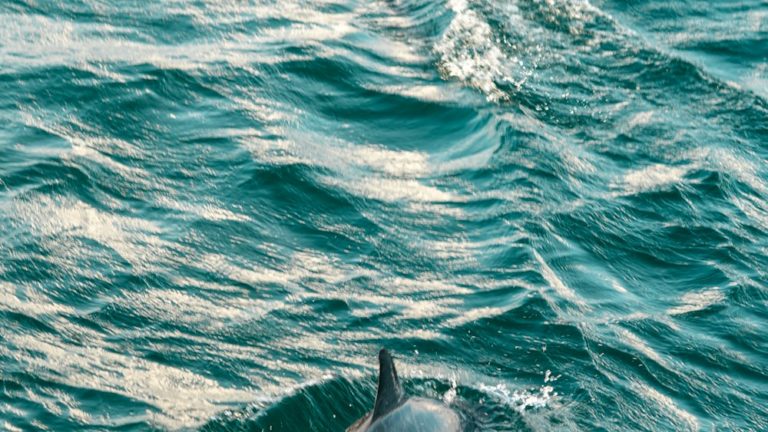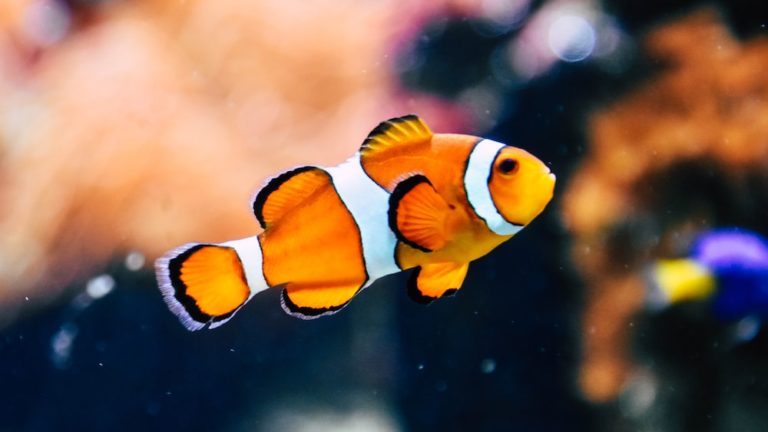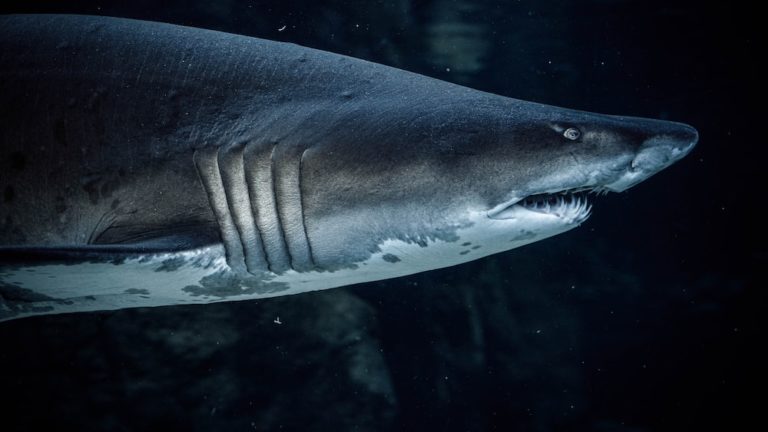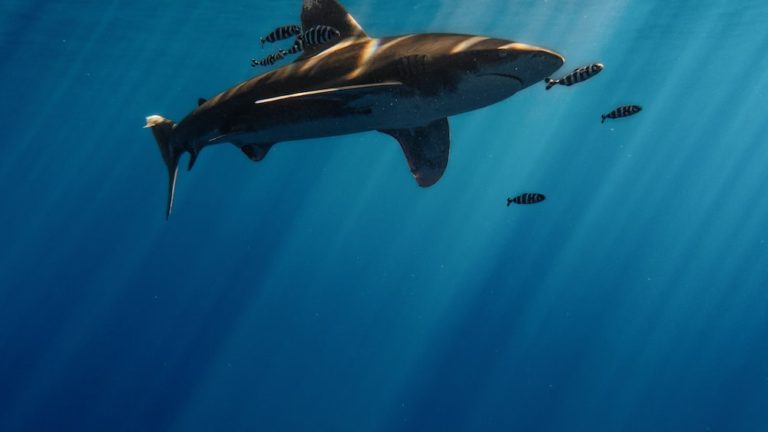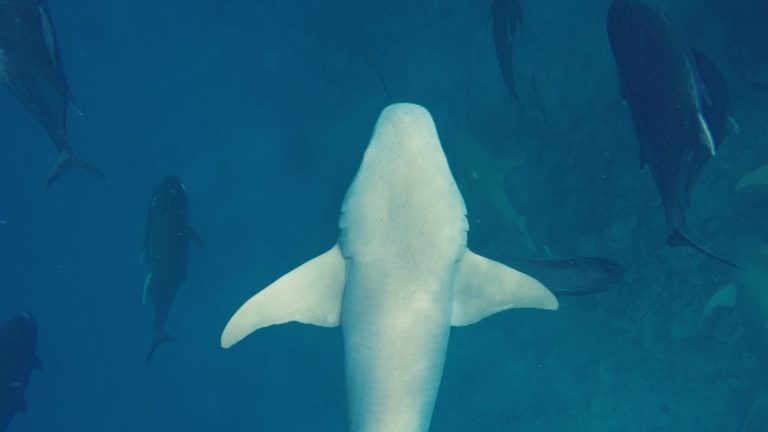Different Body Forms Of Fish: Exploring Anatomical Diversity
Different Body Forms Of Fish: Exploring Anatomical Diversity
Welcome, aquatic aficionados and friends of fins! On this immersive blog journey, we’ll dive into the fascinating world of different body forms of fish and their astonishing anatomical diversity. Imagine gliding through the liquid landscape, encountering a ballet of piscine forms shaped by evolutionary pressures and ecological niches.
Key Points:
- Fish species exhibit a wide variety of body forms shaped by evolutionary pressures and ecological niches.
- The body shape of a fish is crucial for its survival and adaptation to its environment.
- Different body forms of fish reflect their behavior, habitat, and ecological niche.
- Classification of fish body shapes includes fusiform, compressed, depressed, elongated, globiform, anguilliform, and more.
- Fish have evolved an array of body shapes as adaptations to predation, reproduction, and environmental influences.
- Extreme body form adaptations in fish include deep-sea adaptations, freshwater vs. marine adaptations, and city vs. country adaptations.
- Fish body shape directly influences their swimming ability, diet, and overall survival.
- The underwater world is a symphony of different body forms of fish, each with a unique role in the aquatic ecosystem.
- The reader is encouraged to contemplate their role in preserving the delicate balance of the marine ecosystem.
Fish species are as varied as the environments they inhabit, weaving a tapestry of life beneath the waves that captures the curiosity of marine life enthusiasts like us. From the sleek, rocket-shaped pelagic travelers to the oddly spherical pufferfish, every body tells a tale of adaptation and survival. So, let’s embark on this underwater odyssey, ready to unravel the secrets held within the body forms of our scaly companions.
The Significance of Body Forms in Fish
Dive into the depths with me and let’s explore why different body forms of fish are far more than just a matter of aesthetics. In the vast watery realm, every curve, fin, and scale is a chapter in an evolutionary storybook, where characters adapt and thrive based on their anatomical gifts. These body forms are like pieces in an ecological puzzle, perfectly fitting the lives they lead.
The Role of Body Shape in Aquatic Environments
As we submerge ourselves into the ocean’s embrace, it’s evident that the body shape of a fish is its passport to navigating the aquatic world. Fusiform fish slice through currents with torpedo-like efficiency, showcasing how a streamlined form minimizes drag for these speedsters of the sea.
Conversely, broader, laterally compressed bodies equip their bearers for a very different ballet – these are the dancers of the reef, crafting a life among the corals and crevices. Body shape, it seems, is the silent conductor of this underwater symphony, cueing each species to play its role in the vast marine orchestra.
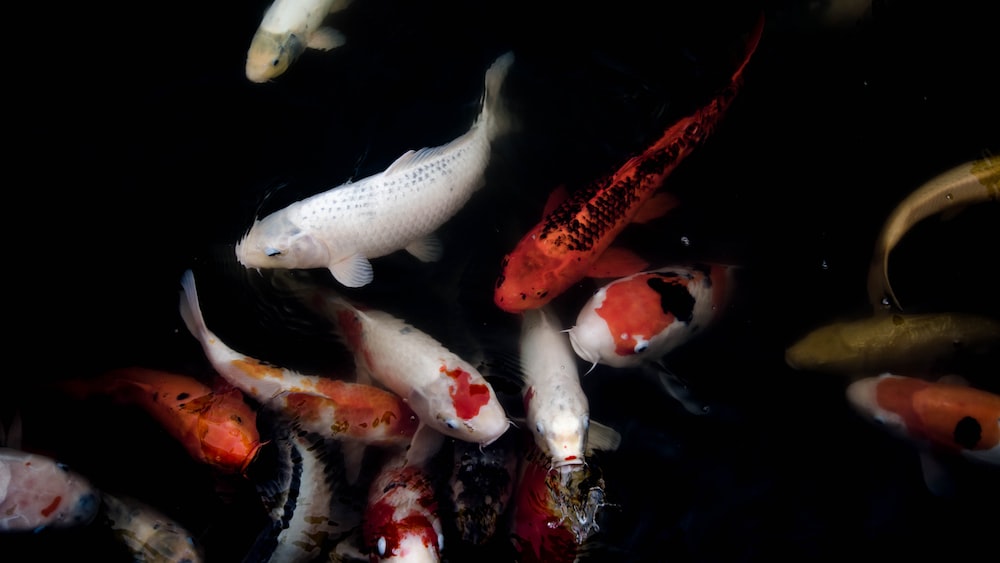
Body shape plays a crucial role in how different species navigate and thrive in the underwater world.
How Body Forms Reflect Fish Behavior and Habitat
Picture a school of disc-shaped angelfish fluttering amongst the corals; their compressed bodies negotiate the nooks with grace, a shapely adaptation to their reef-bound ballet. Then there are the elongated forms, like the needlefish, which slip through the water column, surreptitiously stalking prey.
Different body forms of fish not only hint at their behavioral repertoires but also shine a spotlight on their selected habitats. Fish have carved out their niches, and with each unique shape, a new chapter of ecological storytelling unfolds, detailing the intimate bond between a fish species and its watery world.
Classification of Fish Body Shapes
Shall we categorize the ensemble of ichthyological forms that drift through our oceans? Identifying different body forms of fish offers us a lexicon to describe and appreciate the diversity among fish species.
Fusiform: The Streamlined Swimmers
When the ocean asked for speed, the fusiform body shape was its resounding answer. These streamlined swimmers, looking like aquatic arrows, carve through the water with efficiency.
Their tapered ends and bulging middles whisper of a need for speed, and indeed, fish like tunas and mackerels, with their fusiform design, seem to be in a perpetual race with the currents, etching their paths with undeniable velocity.
Compressed: The Reef Dwellers
Within the technicolor theatrics of the reef, compressed bodied fish are the virtuosos of verticality, gliding between corals with the finesse of an artist’s brushstroke. Their flattened sides aren’t just a feature; they’re a species‘ signature, a testament to their life amidst the labyrinth of the ocean’s art gallery.
Imagine butterflyfish, colorful reef dwellers, using their slender forms to dance in and out of coral hideaways as easily as sunlight ripples through the water. Their bodies are living canvases, adapting to the complexity of the reef, illustrating a symbiotic spectacle of shape and habitat.
Fish in the reef are like virtuosos of verticality, gliding between corals with the finesse of an artist’s brushstroke.
Depressed: Bottom Feeders and Ambush Predators
Now, let’s shift our gaze towards the seabed, where the depressed body forms reign. These fish are an emblem of the adage “flat is the new fit” within their benthic realms.
Imagine flounders and stingrays, with their pancake-esque silhouettes, blending seamlessly into sandy or muddy bottoms. Their flattened forms are not a matter of fashion, but rather function, setting the stage for their roles as camouflaged predators or stealthy scavengers.
Elongated: The Slender Navigators
In the water’s quieter corners, we encounter the elongated architects of the aquatic alleyways. These slender navigators, from the pipefish to the aptly named ribbon eels, demonstrate the utility of stretching oneself thin.
Their slender bodies allow them to insinuate themselves within the ribbons of seagrass or the crevices of reefs. Through narrow straits and tangled plant matter, these fluid forms are whisper-thin whispers, embraced by the water, barely stirring the silence as they pass.
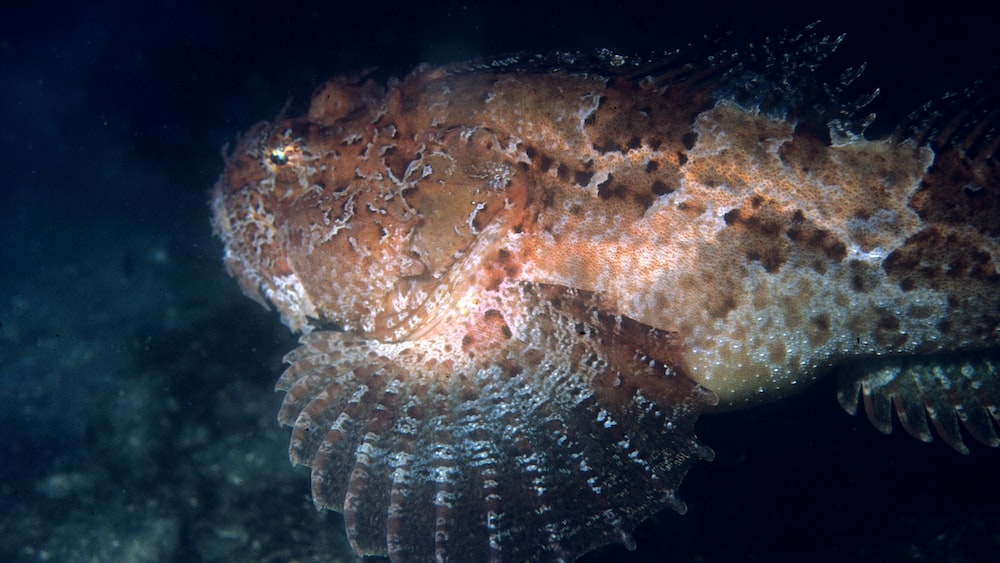
Globiform: The Peculiar Spherical Species
Let’s not overlook the surprising and somewhat comical globiform fish species – rotund residents of the deep that have us pondering, “How does round go around?” These peculiar spherical species, the pufferfish being a poster child, expand their profiles as a defense mechanism, turning from prey to a prickly problem for would-be predators.
This quirky shape plays into their survival strategy, with fins finessing their buoyancy and maneuverability despite what their balloon-like bodies might suggest. Their comical contours serve as a boon, making them a memorable sighting on any dive.
Anguilliform: The Eel-like Adapters
Have you ever been enchanted by the sinuous waltz of an eel, undulating through its aquatic realm with a serpentine grace? The anguilliform body shape is tailored for such a spectacle, defined by elongated and flexible bodies.
With minimal fins and a snake-like form, these creatures showcase a different kind of rhythm, one that resonates with the whispers of the waters they slither through. Their form is a testament to their adaptability, making them adept at exploring the nooks of their underwater world.
Just like the eel’s adaptability in exploring its underwater world, embracing flexibility and adaptability can help us navigate through life’s challenges with grace and ease.
Adaptations in Fish Anatomy
The story of different body forms of fish intertwines with the varied anatomical adaptations they’ve acquired over eons.
Fins and Their Functions
Have you ever marveled at the myriad of fins that fish flaunt? Each fin, from the pectoral to the caudal, serves a pivotal role in the fish’s aquatic acrobatics.
Pectoral fins can function like underwater wings, exemplified by the elegant gliding of rays over oceanic canvases. Meanwhile, dorsal fins act as stabilizers, keeping the symphony of swimming composed and on course. The caudal fin, or tail, often provides the propulsive power needed for their aqueous adventures, especially in the realm of the fusiform flyers.
Skin and Scale Variations
Upon closer inspection, one can observe a dazzling array of skin and scale variations across different body forms of fish. Armors of scales not only protect, but they reflect and refract light, contributing to the spectacle of the sea.
The skin itself can be a functional fashion statement, from the slippery mucus that guards against parasites to the intricate camouflage patterns that blend seamlessly into the backdrop of marine habitats. And let’s not forget the bare-skinned species, eloquently devoid of scales, like the slippery eels that seem to squirm straight out of grasp.
Fish have a wide variety of skin and scale types that serve both protective and aesthetic functions, from reflective armors to camouflage patterns and even bare-skinned species like eels.
Sensory Organs and Perception
Beneath the surface, fish perceive their world with an array of sensory organs fine-tuned to their liquid lives. Their eyes, often attuned to the dim glow of underwater environs, can spot a fellow dancer in the watery waltz.
The lateral line system, a series of canals and sensors, reads the water’s whispers, detecting currents and movements with astonishing accuracy. Vibrations and changes in pressure become pieces of an underwater symphony heard through their skin. With these adaptations, the fish’s perception of their aquatic stage is as rich and full as the life they lead within it.
Evolutionary Perspectives on Fish Body Forms
The tapestry of life beneath the waves is rich with diverse body plans, uniquely tailored through the eons by evolutionary pressures. Delving into these different body forms of fish, we can see the fascinating story of adaptation and survival, painting a picture of nature’s ingenuity. Evolutionary biology provides a backdrop to understand how fish body shape has been molded by the trials and triumphs of life underwater.
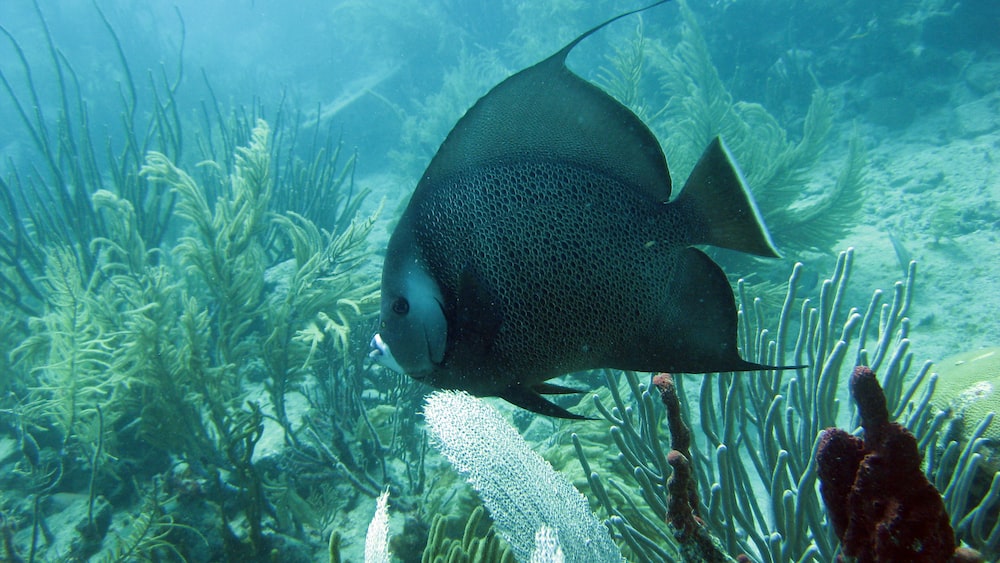
Environmental Influences on Fish Evolution
Dive into the history of the finned inhabitants of our oceans, and you’ll unearth a saga of evolutionary change driven largely by the environment. A fish’s habitat shapes its contour profoundly; think of Pacific kelp forests where slim-bodied fish flit between fronds, or the vast, open ocean home to torpedo-shaped tunas which slice through the water with astonishing speed.
Every grain of sand, coral polyp, or rocky crevasse has the potential to leave an imprint – sometimes quite literally – on fish body shape. In the shallow sunlit waters of estuaries, you’ll find broader-bodied fish which have adapted to navigate narrow, plant-choked channels. Contrast this with the inky depths of the abyss, where the pressures of survival have painted fish in stranger hues, each form oddly suited to its niche.
Predation and Body Shape Adaptations
Fish have evolved an array of body shapes as a dance with danger – predators lurking in the waters have unwittingly sculpted their prey through the ages. A sturdy body may withstand nips and chomps, giving species like the boxfish an edge, while slender-bodied fish such as the barracuda are designed for swift escapes.
The game of hide and seek played out in the ocean’s waters has led to amazing adaptations. Flatfish merge into the seabed, avoiding the keen eyes of hunters above, while some small reef fish sport shapes that mimic leaves or debris, helping them to blend in and outwit potential threats.
Reproductive Strategies and Anatomical Changes
Reproduction is the bedrock upon which evolutionary tides shift, and fish have developed diverse body forms to ensure their lineage endures. Some fish such as sea horses or mouthbrooding cichlids have quirky body shapes that support their unique child-rearing methods.
A female anglerfish’s rounded form allows room for her to carry young, and sometimes even the dwarfed males who hitch a lifelong ride. On the other hand, streamlined swimmers like salmon are built for the long-haul, migrating upstream to spawn – their body shape as much a tool for survival as any fin or gill.
Body shape in fish is as much a tapestry of love as it is a shield against predation, or a knife to carve through currents. The dance of life in the deep blue is inextricably tied to the form taken by these aquatic troubadours.
Fish have developed diverse body forms to ensure their lineage endures, with body shape being a tapestry of love, a shield against predation, and a tool for survival.
Case Studies: Extreme Body Forms in Fish
When you plunge into the realm of extreme fish body shape adaptations, it’s like falling into a natural history novel where the characters have evolved far beyond our wildest imagination. These case studies are a window into the inner workings of evolution, rippling through every fin and scale.
Deep-Sea Adaptations: Bioluminescence and Pressure Resistance
In the velvet black of the deep sea, where sunlight is a myth, fish have transformed pressure into possibility. Bioluminescence lends a soft glow to countless species, turning them into living lanterns in the perpetual night.
The body forms here have to contend with colossal pressure – enough to crush any surface-dwelling creature. These deep-sea dwellers are often gelatinous or lack air bladders, their peculiar shapes a testimony to their survival in crushing depths.
Freshwater vs. Marine: How Habitat Shapes Anatomy
Freshwater locales are often intricate mosaics of current, calm, and cover. Here, you’ll find fish whose body forms are as varied as nature’s moods. Compare that with the ocean’s vastness – a canvas for more uniform shapes, honed for endurance and speed.
Differences between freshwater and marine fish aren’t limited to mere shape – scale texture, buoyancy adaptations, and even fin placement might change, all to better suit the watery world they inhabit.
City Fish vs. Country Fish: The Impact of Urban Environments
Remarkably, urban waters tell a tale of fish body shape evolution that is ongoing before our very eyes. The city fish – those who navigate the concrete streams shaped by human hand – can exhibit different forms when compared to their country-dwelling kin.
Pollution and unconventional food sources in cityscapes lead to changes in form and function. In these unlikely environments, fish may develop tolerances to toxins, or body shapes that let them exploit human-made structures. It’s a concert of adaptation against a backdrop of skyscrapers and storm drains.
FAQs
1. How does body shape affect a fish’s swimming ability?
Fish body shape directly influences a fish’s swimming ability by affecting hydrodynamic efficiency. Streamlined shapes allow for speed and agility in open water, while broader bodies offer more maneuverability in tight spaces.
2. What are the most common body shapes among fish species?
The most common body shapes among fish species tend to be fusiform, streamlined for efficient swimming, and laterally compressed, suited for life among reefs and plants where agility is critical.
3. How does the body form of a fish influence its diet?
The body form of a fish influences its diet by dictating its ability to chase prey, ambush, or forage for food. A streamlined predator can pursue swift prey, while a bottom-dwelling shape may be more suited to scavenging.
4. Can the body shape of a fish change during its lifetime?
While the basic body shape of a fish typically remains consistent throughout its life, some changes can occur such as growth in size or alterations during maturity and breeding phases.
Conclusion
The underwater world is a symphony of different body forms of fish, each with a unique role in the aquatic ecosystem. As a marine life enthusiast and conservationist, the journey through the depths reveals how fish body shape is an orchestra of evolution, each species playing its part in the grander score of survival. It beckons a question to all of us on land: how will our actions resonate through these watery depths?
Let’s contemplate how we, too, are participants in this evolutionary narrative – our daily choices like ripples that reach far below the water’s surface. Will we endeavor to preserve these myriad forms, or neglect the delicate balance they represent?
As for me, Jasper Flynn, the call of the tides is clear. I encourage you to listen, to learn, and to take action – for the future of our finned friends, and the oceans they call home, is intertwined with our own. Sail smoothly, and remember, every wave we make shapes the shore.


